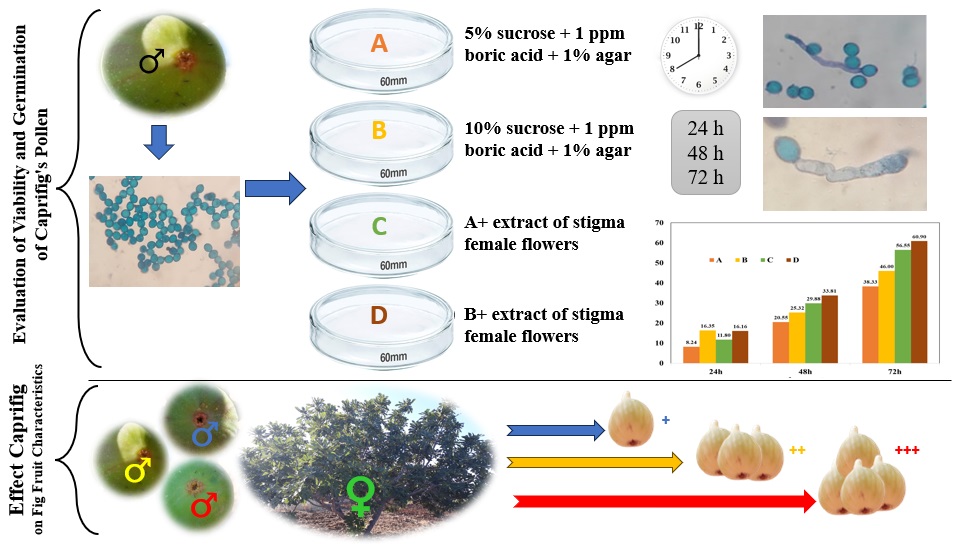Evaluation of viability and germination of pollen grains of three local caprifig cultivars and their effect on some characteristics of fig fruits (Ficus carica L.)

Published 2024-01-18
Keywords
- Caprifig,
- Ficus carica,
- flower stigma extract,
- pollen germination
How to Cite
Copyright (c) 2023 Hafsa BARAKAT, Rida DRAIE

This work is licensed under a Creative Commons Attribution 4.0 International License.
Abstract
This research was carried out in fig fields in the village of Kafar-Jales, in the north of Syria. The analyses were conducted in the laboratories of the Faculty of Agriculture at Idlib University during the 2022 farming season, to evaluate the viability and germination of three local varieties of Caprifig (Bunduqi, Azraq, Panjani). The morphological characteristics, the date of the exodus of insects (Blastophaga psenes) from male fruits, the quantity of pollen, and the percentage of germination and viability were studied on four nutritive media at a temperature of 27°C. The measurements were taken after 24 h, 48 h, and 72 h. These three pollinators were used to pollinate three varieties of edible figs (white Satehi, Safrawi, and Habashi) to study the effect of pollen source on the productive characteristics of edible fig fruits. The result showed significant superiority of the Bunduqi cultivar over the rest of the cultivars in traits of the fruit’s early ripening, pollen quantity, and date of departure of insects. The Azraq cultivar is found to be superior to Bunduqi and Panjani cultivars in the germination rate of pollen at all stages of the experiment and in all used media. The addition of stigma flower extract in culture media increased germination percentage by 35% for all studied Caprifig cultivars. The addition of 10% sucrose in the cultivation environment increased the percentage of pollen germination by 20%. The cultivars that were inoculated with the Panjani pollinator outperformed the characteristics of the length, diameter, and weight, demonstrating that the fruit’s quality characteristics are affected by the genotype of the pollinator used. The results of this research can be beneficial for both fig growers and plant breeders, as they help to select the best pollinators and contribute to the development and improvement of the quality of the cultivated fig fruits.




